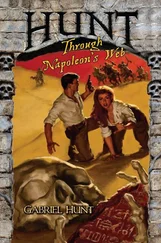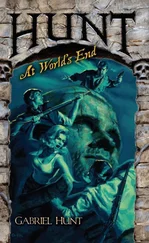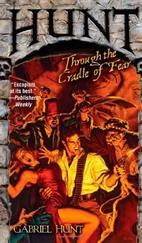Armand Cabasson - Wolf Hunt
Здесь есть возможность читать онлайн «Armand Cabasson - Wolf Hunt» весь текст электронной книги совершенно бесплатно (целиком полную версию без сокращений). В некоторых случаях можно слушать аудио, скачать через торрент в формате fb2 и присутствует краткое содержание. Год выпуска: 2012, Издательство: Gallic Books, Жанр: Старинная литература, на английском языке. Описание произведения, (предисловие) а так же отзывы посетителей доступны на портале библиотеки ЛибКат.
- Название:Wolf Hunt
- Автор:
- Издательство:Gallic Books
- Жанр:
- Год:2012
- ISBN:нет данных
- Рейтинг книги:5 / 5. Голосов: 1
-
Избранное:Добавить в избранное
- Отзывы:
-
Ваша оценка:
- 100
- 1
- 2
- 3
- 4
- 5
Wolf Hunt: краткое содержание, описание и аннотация
Предлагаем к чтению аннотацию, описание, краткое содержание или предисловие (зависит от того, что написал сам автор книги «Wolf Hunt»). Если вы не нашли необходимую информацию о книге — напишите в комментариях, мы постараемся отыскать её.
Wolf Hunt — читать онлайн бесплатно полную книгу (весь текст) целиком
Ниже представлен текст книги, разбитый по страницам. Система сохранения места последней прочитанной страницы, позволяет с удобством читать онлайн бесплатно книгу «Wolf Hunt», без необходимости каждый раз заново искать на чём Вы остановились. Поставьте закладку, и сможете в любой момент перейти на страницу, на которой закончили чтение.
Интервал:
Закладка:
Margont was facing his company to make sure they were correctly aligned. He saw with astonishment dozens of faces registering horror. He turned round to see a knot of soldiers in flight. It was a frightening rout. Saxons, French and Hessians were running until they were out of breath, barging into each other. This wave was hurrying towards the Legrand Division. Lefine looked at this spectacle, unable to take it in, as if it were a vast optical illusion.
‘Well, we’re not ready to play “Victory Is Ours” he murmured. ‘Don’t panic! Close ranks!’ exclaimed Margont.
Everywhere, officers were giving similar orders. If the Legrand Division did not manage to stay in battle order, the Austrians would attack it in its turn.
Piquebois, who considered himself rather dashing playing the role of the wounded soldier bravely preparing to enter battle again, a role he supplemented with an entirely unnecessary cane, shouted: ‘Don’t worry, the 8th Hussars are in the vicinity! I was one of them; they’re a fiercesome bunch! I’ll break my cane over the head of the first man to run for it!’
Saber was even more vindictive.
‘We don’t need the Saxons! They’re traitors! I’m sure they did it on purpose because they’re hand in glove with the Austrians! We’ll have them shot after the victory.’
But the ranks broke up anyway, undulating and fusing together ...
the formation becoming more and more confused. The recruits were no longer listening to anything. Many had practically never fought. Up until now, they had imagined that battles took place in an orderly fashion; that Napoleon understood the situation in a single glance, clicked his fingers to make the soldiers advance and a great victory was immediately won. This debacle alarmed them. They had the impression that it was the entire Grande Armée that was fleeing and they certainly did not want to be the last to have stayed in place ...
Margont saw his company subsiding in on itself as if squeezed by gigantic invisible hands. It was like a child curling up into a ball. ‘Stay calm! Close up,’ he repeated, while the first fugitives ran past him.
Major Materre suddenly appeared at full gallop, and pulled on his reins. His horse pirouetted, finally stopped, and snorted. The superior officer was outraged.
‘Captain Margont, keep control of your company! You’re causing chaos!’
The major immediately departed again, which worried the infantry still further. The bulk of the fleeing soldiers was now almost upon them and as they could not go round the Legrand Division, they struck through the middle, barging through the ranks, knocking over the aligned infantry, who took advantage of the chaos to join them ... The fugitives were like a hailstorm carrying away fragments of the formation. Officers hit them with the flat of their sabres to frighten them and oblige them to stop. The entire division began to retreat in a gigantic mass, carried gradually away by the flood.
Saber hurried over to Margont. ‘Has someone given the order to retreat? Must we stay in position or should we pull back?’
‘What do I know?’
General Legrand’s seven thousand men were moving backwards at a growing pace. Loud detonations could be heard, coming more and more quickly until they turned into a continuous roar. Belle-garde’s Austrians had installed batteries in front of the village of Aderklaa and were bombarding the French at point-blank range.
The round shot decimated the lines of infantry, causing horrifying gaps. Now the Legrand Division resembled a gigantic creature from which the Austrian artillery was tearing lumps of flesh. A ball ricocheted past Margont and landed on his company, scything off a series of legs. Margont froze, petrified, and then mechanically followed his retreating men.
‘Close ranks!’ he shouted, his mind focused on one thing: if the division did not stay packed closely together, it would be exterminated.
The left flank and the left of the French centre were on the brink of collapse. Bellegarde’s I Corps and the élite Liechtenstein Corps would have been able to launch a massive attack on that weakened part of the French army. But Archduke Charles was a prudent strategist. He insisted that a corps should only advance after he was certain that it could stay linked to its neighbouring corps, so as to avoid leaving any breaches in their line. Bellegarde therefore waited for the arrival of Kolowrat’s III Corps on his right, before acting. But Kolowrat still had several miles to cover because he
was positioned too far west, the Archduke having thought that Napoleon would choose the same battlefield as he had used in May.
Napoleon profited from this relative respite. He went to the menaced zone and succeeded in rallying some of the fleeing soldiers. He immediately sent the remains of the Saxon regiments to the centre of his arrangement - the safest position - so that they could regain their confidence. The Legrand and Carra Saint-Cyr Divisions stopped retreating and began to re-establish themselves for battle. Nansouty’s cuirassiers, come to reinforce these divisions, offered protection. Napoleon was therefore present for an impressive spectacle. The enemy right wing finally began to act, after having been delayed by the slow working of the Austrian army mechanism. Kolowrat’s sixteen thousand men started to attack the north-east of the French left flank, while Klenau’s fourteen thousand soldiers of VI Corps marched against the south-west, defended only by Boudet’s division and the heavy artillery of the Isle of Lobau. The noise of the long, wide white columns advancing was deafening. They streaked the plain in perfectly ordered lines.
It was both good and catastrophic news for Napoleon. Good news because the Austrians were falling into his trap. Catastrophic because, with the poor state of the left flank and the left part of the centre, it could be considered that in fact it was the French who were falling into their own snare. A race against time began: Napoleon had to smash the Austrian centre before his adversaries could sweep away his left flank.
Napoleon ordered the methodical Marshal Davout, commander of the right wing, who had just repulsed the assault by Rosenberg’s Austrians, to attack the enemy left flank. Davout was to take the village of Markgrafneusiedl, situated at the end of the plateau of Wagram. General Oudinot received the order to attack the enemy centre. Multitudes of blue troops surged forward while multicoloured cavalry charged. The French went at it furiously, as did the Austrians. Both front lines were constantly reinforced, devouring regiments at a pace impossible to grasp.
On the left, the danger was increasing. Boudet’s division, overcome and still retreating, nevertheless tried to stem as much as possible the flow of Austrians along the bank of the Danube. General Boudet had wanted to entrench in Aspern, but Wallmod-en’s hussars had just massacred his gunners and had taken his fourteen cannon. He had therefore been forced to evacuate the village using sabre blows as defence ... Instead of sending reinforcements to his left, Napoleon had chosen to save his reserve infantry to use later to exploit an eventual breach of the Austrian centre. So he improvised another solution: Massena’s IV Corps was going to form a marching column and descend to the southwest to stop Klenau’s VI Corps. The problem was that in manoeuvring in this way, Massena first had to turn his back on the Austrian I Corps under Bellegarde, and the élite Liechtenstein Corps. Then he would expose his flank to Kolowrat’s III Corps before finally arriving level with the villages of Aspern and Essling, near the Danube, to confront Klenau. This five-mile march down the French left flank was likely to be extremely dangerous. To try to protect this manoeuvre Napoleon decided to use the cavalry and the artillery instead of infantry, which was most unusual in this type of movement. Lasalle’s light cavalry, Nansouty’s heavy cavalry and the cavalry of the Guard charged the Austrians intent on immobilising them. General Lauriston, who commanded the artillery of the Guard, was commanded to form a giant battery. He assembled all the pieces of artillery he could find - those of the Guard, of Prince Eugene and of the Bavarians under General de Wrede - and began to place the hundred and twelve cannon in a mile-long line along the north-east of the left flank, replacing Massena’s troops, who were about to depart. Over and above that, Napoleon gave the order to retake the village of Aderklaa. Moli-tor’s division, part of Massena’s IV Corps, succeeded in taking it. But it was clear that they would not keep it because the Austrians would try everything to recapture it. Aderklaa must hold out as long as possible in order to occupy the efforts of the troops of Bellegarde and Liechtenstein. In fact that village would serve as a lightning conductor to protect the back of IV Corps.
Читать дальшеИнтервал:
Закладка:
Похожие книги на «Wolf Hunt»
Представляем Вашему вниманию похожие книги на «Wolf Hunt» списком для выбора. Мы отобрали схожую по названию и смыслу литературу в надежде предоставить читателям больше вариантов отыскать новые, интересные, ещё непрочитанные произведения.
Обсуждение, отзывы о книге «Wolf Hunt» и просто собственные мнения читателей. Оставьте ваши комментарии, напишите, что Вы думаете о произведении, его смысле или главных героях. Укажите что конкретно понравилось, а что нет, и почему Вы так считаете.











